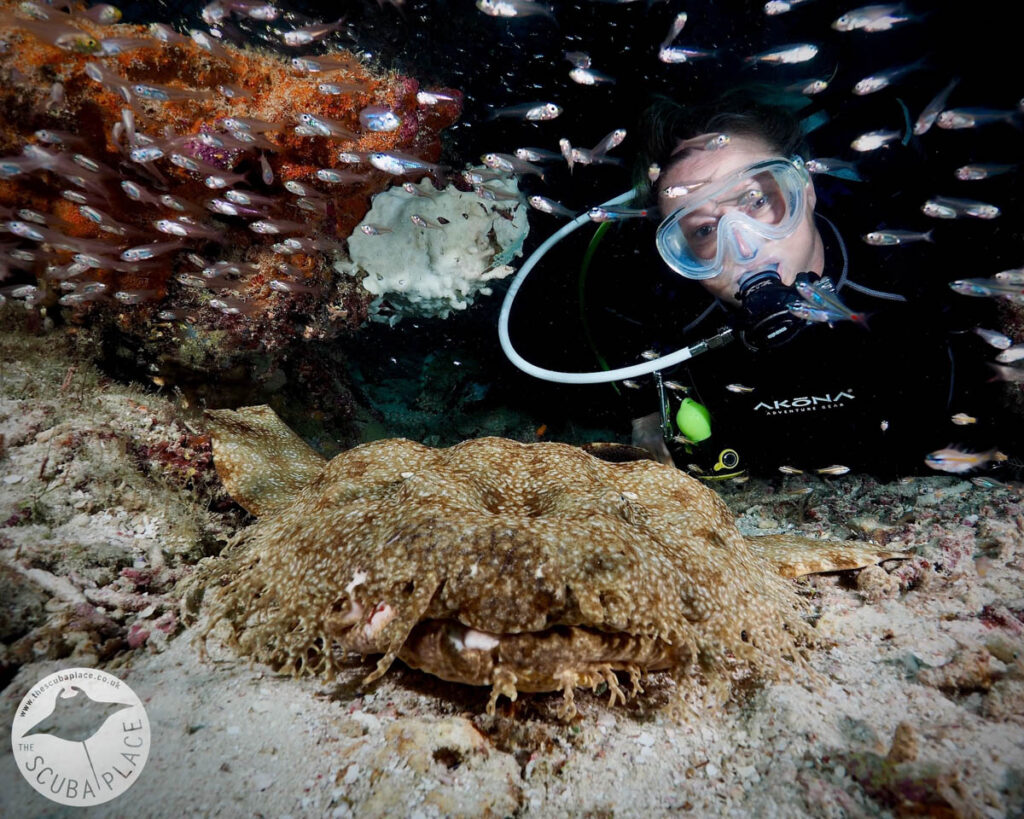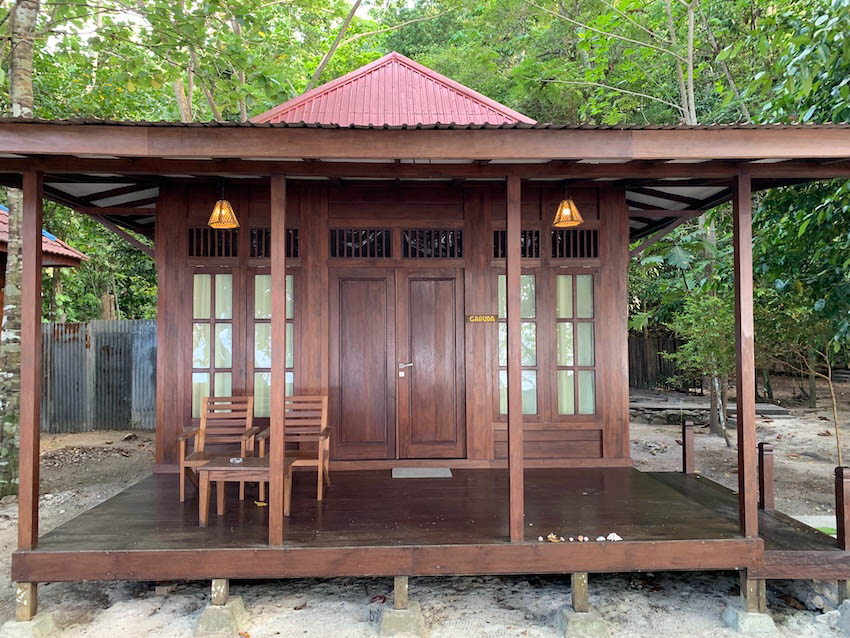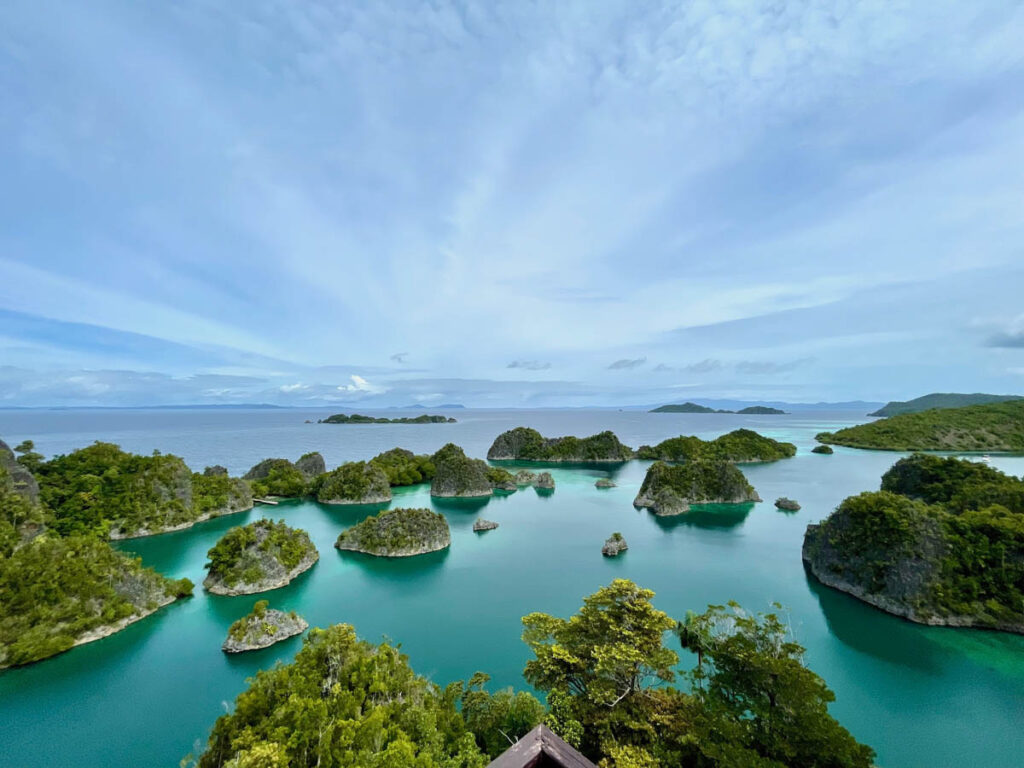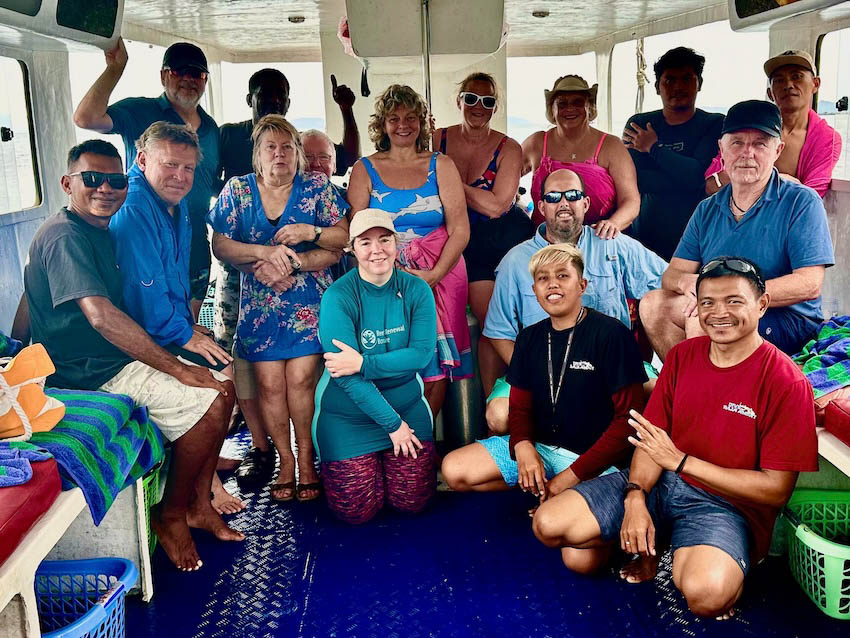This January The Scuba Place visited Ambon, Raja Ampat and Lembeh hosting a group of divers. They stayed at some amazing spots and saw some amazing things! This is their trip report on our second stop in Raja Ampat.
Raja Ampat has always been on our bucket list – just like pretty much every other diver on the planet! We just had to go, and so the choice of liveaboard or resort was the only difficult one we had to make! We chose the latter and opted to stay at the enticing Dive into Raja Ampat.
This was, for some of our group, our second week in Indonesia, and we flew into Sorong from Ambon. Our other guests flew into Jakarta the night before, and flew on to Sorong in the early hours, catching the early ferry to Raja. Landing in Sorong, after walking across the tarmac and collecting our bags, we piled ourselves into the waiting SUVs and made the 20-minute trip to the port to catch the inter-island ferry.
It’s hot, loud, humid, busy, and seemingly disorganised chaos, but it works – welcome to the islands of Indonesia! Our drivers, provided by the resort, arranged for porters to take all our bags onto the ferry. We were shepherded upstairs into the VIP Cabin where the air-conditioning was very welcome. We checked every bag was present and got ready to relax for the two-hour crossing to our island resort. These are big and fast ferries, and they are super-stable, so we weren’t troubled by any seasickness, and a simple range of snacks (biscuits, crisps, and a local version of a pot noodle) and cold soft drinks were available from a small café on board. It seemed as though time flew, and we arrived into the port of Waisai on Waigeo, Raja Ampat’s largest island.
Disembarking was again an experience, but the resort staff were there to collect us and our bags, popping us into waiting SUVs and whisking us off to the resort – a mere 15 minutes away through some stunning scenery.
We arrived and were greeted with a cold drink, and a cold flannel, and welcomed to the resort. Our bags were taken to our rooms whilst we sat and chilled for a bit, and after a shower and a change, we were given a resort and dive briefing.
The resort, made up of 14 rooms, a restaurant, and the dive centre, sits underneath the jungle canopy and on a white sandy beach. There are three room categories – Garden terrace rooms, Seaview rooms, and Waterfront villas. The rooms are super comfortable, with effective air conditioning, vaulted ceilings with fans, a deck or terrace with furniture, en-suite shower rooms and an outdoor shower tap to rinse off. Each room also has its own water dispenser providing both hot and cold drinking water. The Seaview rooms and Waterfront villas have spectacular views, and the Garden terrace rooms have partial sea views too. More Waterfront villas are planned, and they really are on the waterfront – the sea comes right up the beach to the deck at high tide!
The restaurant offers water, tea, and coffee all day, and breakfast starts early for those who get up with the beautiful sunrises. Eggs and omelettes to order, plus fruit, cereals, toast, and a selection of hot offerings, both local and western, set you up well for the day. Lunch and dinner are again buffet style – a superb homemade soup, fresh slices of bread and then both Western and Indonesian main dishes, served with rice, noodles or potatoes. Fruit makes up the dessert at lunchtime, and a proper pud is offered at dinner. An afternoon snack is a welcome treat after the afternoon dive – expect cakes and pastries and all things non-diet related! Special dietary needs can be catered for if pre-advised.
The bar sits right alongside the restaurant and faces the sea – a great place to grab an ice-cold beer, wine from the small but decent wine list or a cocktail We sampled a few of these, in the pursuit of accurate research of course, and they hit the spot!
The resort fringes the jungle canopy, and it is just beautiful. Look up, and there is green everywhere – and birds of paradise, butterflies, geckos, and the cuscus bear – a sloth-like member of the marsupial family that clambers with great dexterity and no haste in the trees around the resort. Ask any member of staff and they will point to one without hesitation – which will save craning your neck for ages while you look for them with untrained eyes!
The dive centre is right on site, and the jetty to take you to the dive boats is a minute’s walk along the beachfront. The recently re-built dive centre has individual hanging spaces for each diver, rinse tanks behind and a superb camera room with separate rinse tanks, air guns and individual charging and assembly desks right next. Locked at night, the camera room opens at 6 am and closes at 10 pm, giving ample time to get in and organise yourselves! Nitrox, 15-litre tanks and even DPVs plus a whole range of equipment are available right on site.
The normal dive day comprises of a two-tank boat trip in the morning and a single-tank boat trip in the afternoon. The house reef is open all day! There are a couple of longer day trips with three dives and lunch on board the dive boats, and these are not to be missed. We took a trip to the famous viewpoint at Piaynemo and the manta cleaning stations, for both oceanic and reef mantas and these excursions should be on every visitor’s dive plans.
And the diving? Huge – that is the only word that I can use to describe the underwater world in Raja Ampat. Huge corals. Huge schools of fish. Huge reefs. Huge list of marine life encountered. And huge currents from time to time too!
The resort is in the Dampier Strait, home to many of the dive sites on any Northern Raja safari itinerary, so we sped out to the best of the best dive sites each day. And a strait it is – a through route between islands that inevitably brings in currents and big tides moving nutrients through the waters, both of which are reasons why the reefs are so incredibly healthy
We saw mobula and eagle rays, barracuda, jacks, snapper, grunts, banner fish, batfish, tuna, billions of glassfish and sweepers, rainbow wrasse and so much more. Cuttlefish that were happy to interact, wobbegongs sleeping below overhangs, huge green and hawksbill turtles, octopus, signal gobies, and blennies galore. We found numerous types of clownfish in their multi-coloured anemones. Even some very very territorial ones who would defend their homes from about 5 metres away! Frogfish, ornate ghost pipefish, banded pipefish, porcelain crabs, squat lobsters – the list goes on and on – and then on some more!
Oh – and the manta rays! We saw both reef and oceanic mantas. And let’s not forget the sharks! Grey reef, black tip, and white tip reef sharks were seen on lots of our dives, and on some of the bigger current dives, we saw them in big numbers off the edge of the reef.
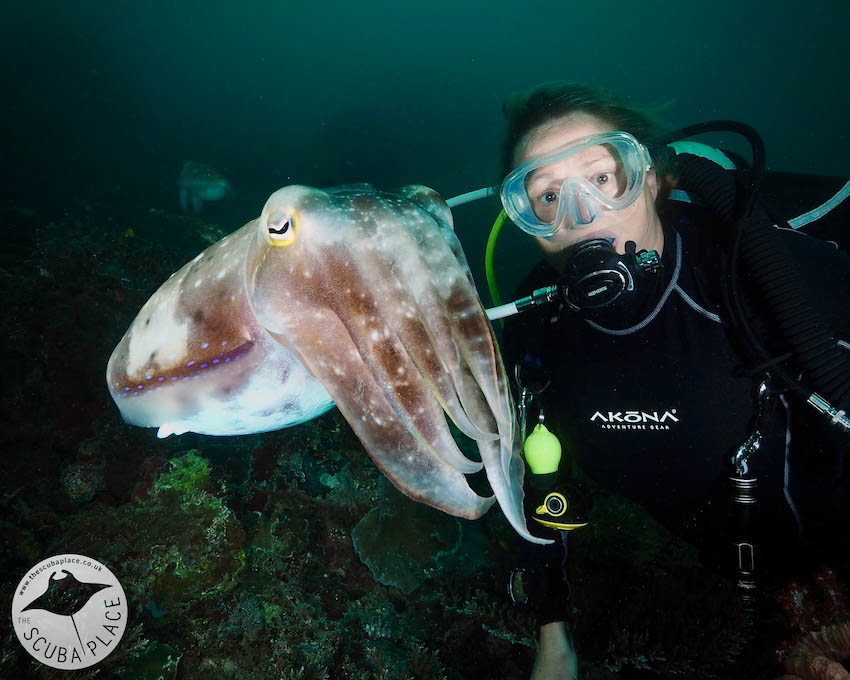
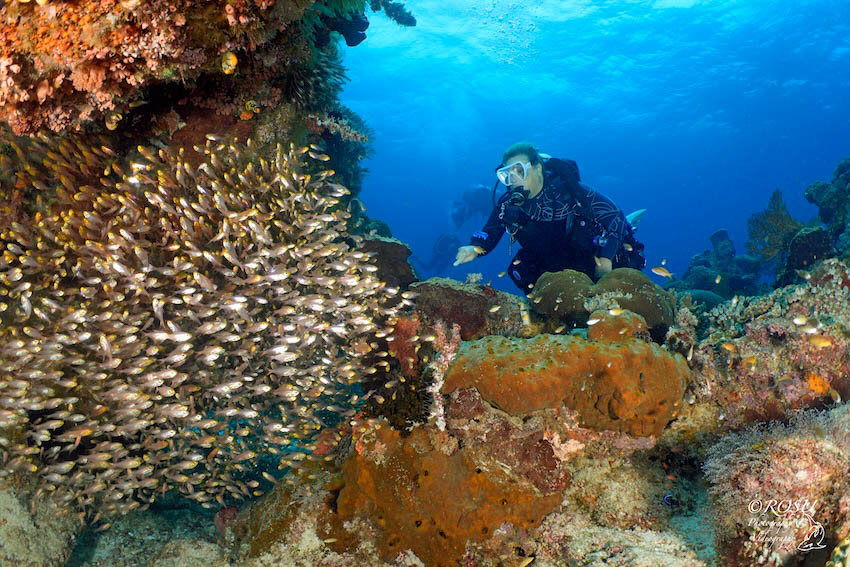
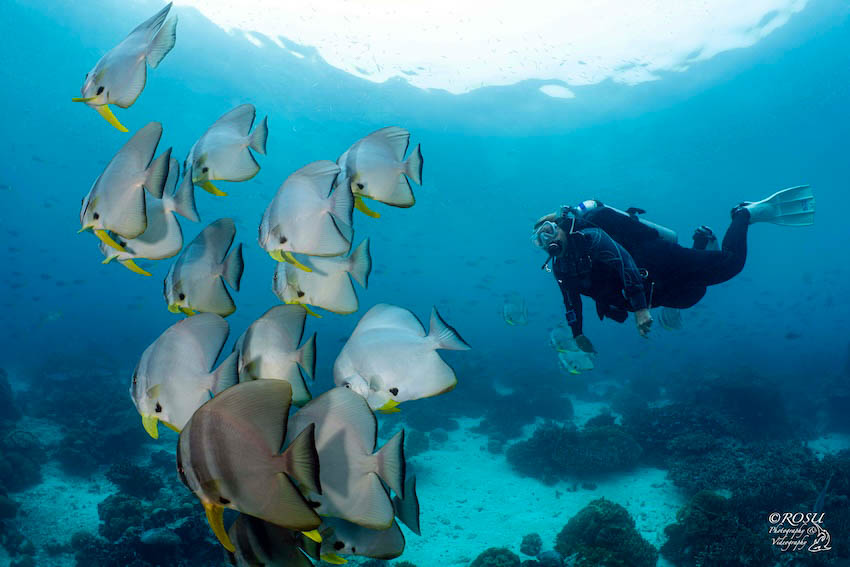
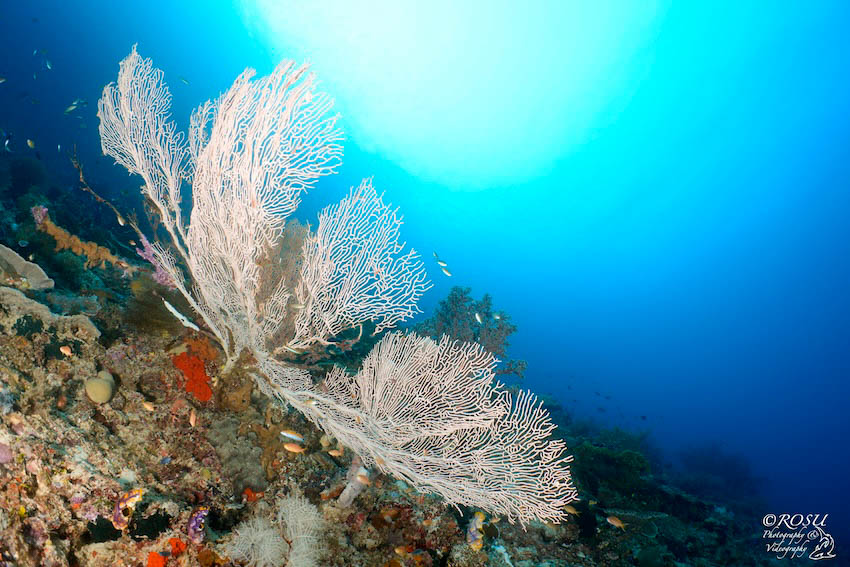
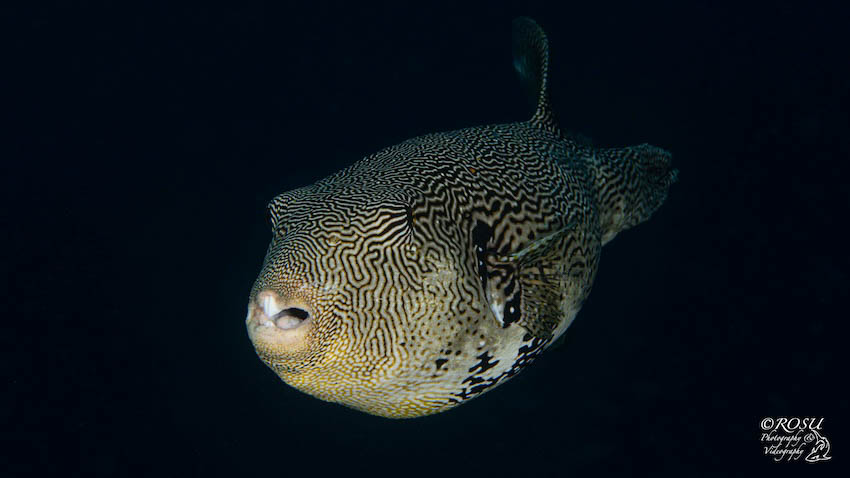
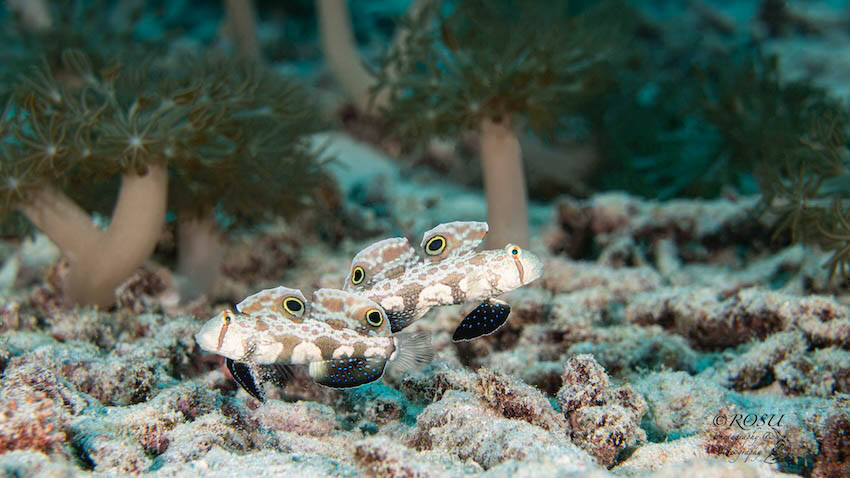
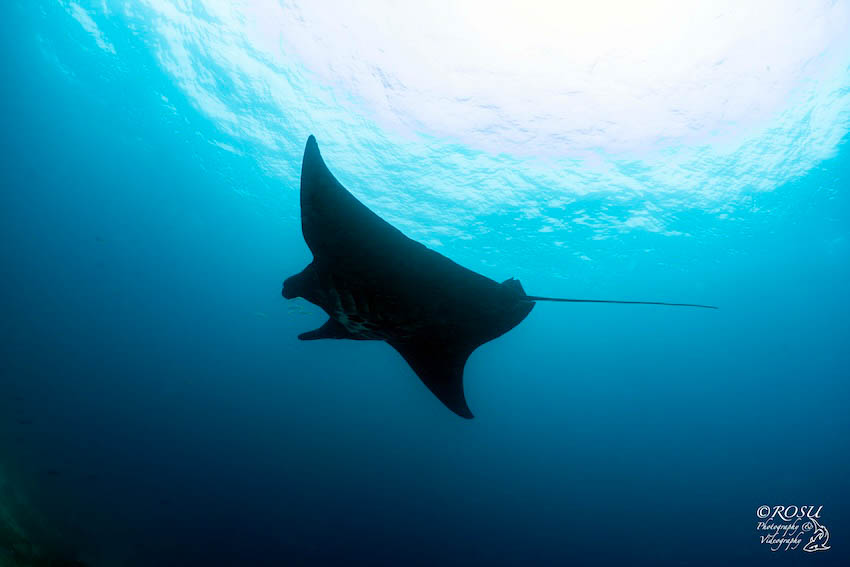
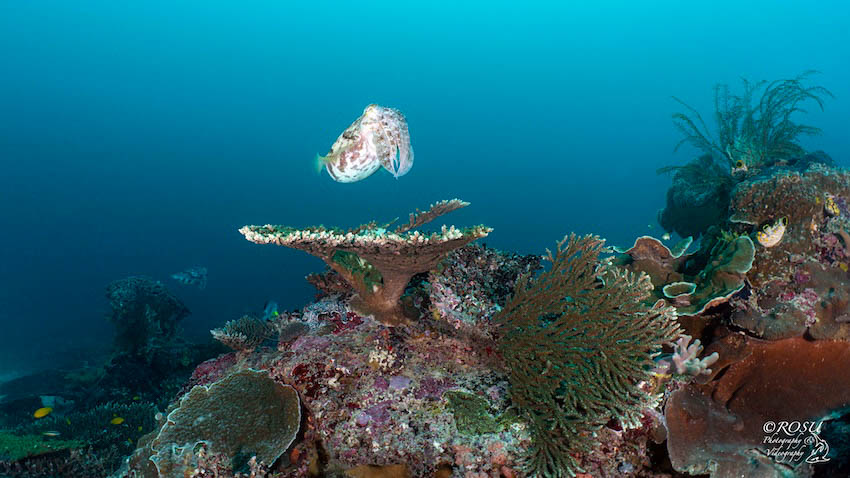
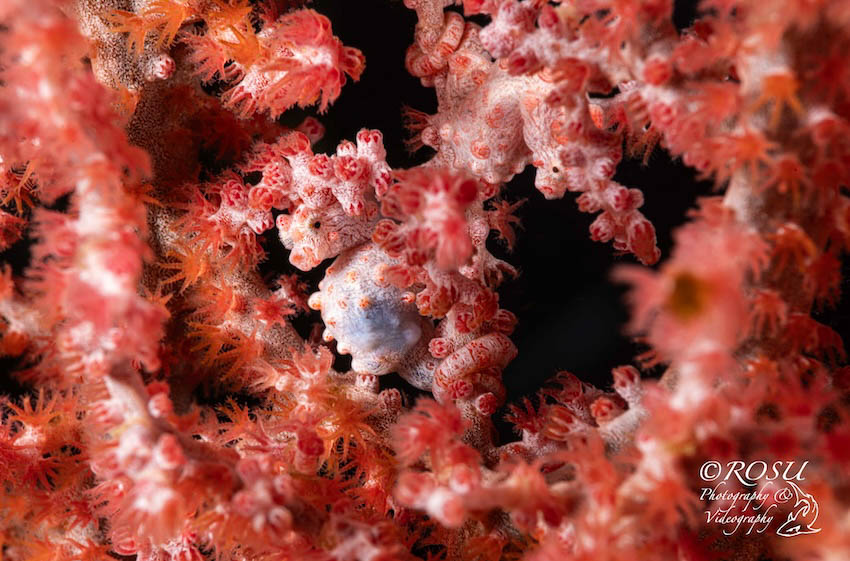
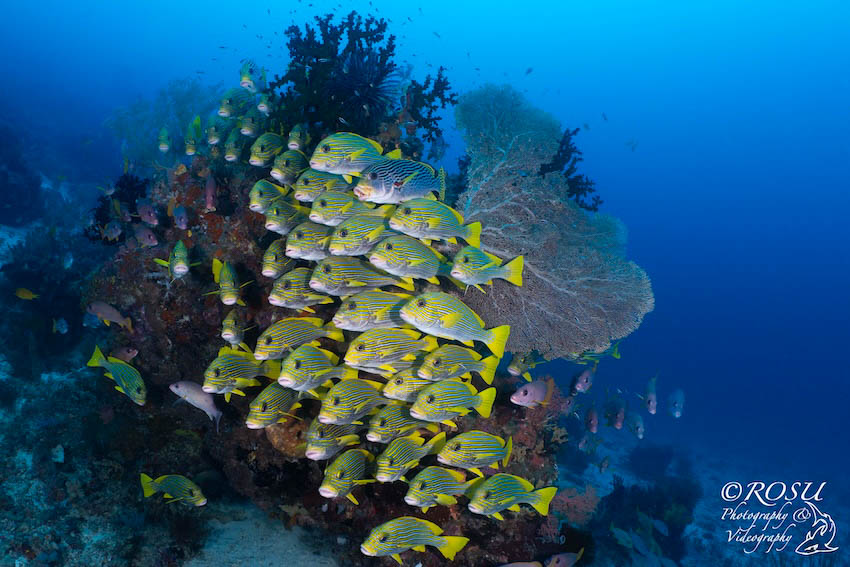
Special thanks to Rob and Susie for sharing some of their amazing photos from the trip.
Visibility varied from 20+m to less than 10m, depending on the dive site, current and tide, but whatever it was, there was loads to see. The corals are immense, and the reefs go on and on. Staghorn coral forests, gorgonian giants, whip coral jungles, stunning sponges everywhere – I have never experienced so much life underwater anywhere! The water temperature hovered around 29′ for every dive, but there were one or two thermoclines that brought on a shiver for a moment or two. Most of us wore 3mm full suits and didn’t have an issue maintaining core temperatures, and we did a lot of diving!
We did some gentle bimbles along the reef, some deliberate drift dives, and some hard-core dives into the current to get to points where the shark action was taking place, and we did a dive in the biggest current I have ever experienced! All the big drift dives previously experienced across the globe became like a kid’s slide in a soft play park compared to this one at Kri Island. We were simply grabbed by the current without any notice and launched at breakneck speed over the top of the reef, whipping past bommies and pillars, using our fins to steer between fans and a shiver of half a dozen reef sharks, we were eventually catapulted out into the blue at the end of the reef – what an experience!
We did a couple of additional excursions in our week with Dive into Raja Ampat – a three-tank day trip to dive with the monitored populations of manta rays, and a three-tank day to take in the iconic views of Piaynemo.
The mantas are monitored by scientists, and there is an observation platform on top of the reefs where they visit a favourite cleaning station for the Oceanic mantas. Across the reef, we also dived on the lookout for reef mantas, and we had Lady Luck with us as they turned up! As we continued down the reef, a fever of at least 16 mobulas flew by in formation.
The trip to Piaynemo was great fun with two awesome dives, and then a big climb up the hill to the viewing platform. We had blue skies and captured that photo that is synonymous with being in Raja Ampat. A third dive on the way back home under a pier was excellent. It gave us a lovely backdrop for photography and was complete with turtles and curious batfish.
The dive staff were amazing for the whole week – they know their dive sites and found us all sorts, and they always kept an eye on us and ensured our safety. You can have thousands of dives in your logbook, but a different environment can be a real leveller, especially if there is a huge current or reduced visibility.
The dive boats are big, fast, and comfortable with a roof deck and an open bow area with seating if you wanted the sunshine, or a covered deck if you wanted to stay in the shade. A sea toilet on board made things easy and there was ample cold water, tea, and coffee, plus biscuits between dives! Backward rolls were our method of entry, and the ladder to get back into the boat was sturdy and easy, even for us with old bones and joints!
In one week, we dived most of the dive sites that a safari boat would do on the Northern Raja itinerary – we even tied up alongside one or two of them while our dive guides caught up with their friends on surface intervals! We love liveaboards, and there are some absolute stunners in Indonesia, but a week at Dive into Raja Ampat is exceptionally good value for money and considerably cheaper than a liveaboard, so we still can’t answer the opening question – Resort or Liveaboard?
We had a blast, loved the diving, loved the resort, and loved the whole experience – Raja delivered everything that we had anticipated, and more!
Key Facts:
- Getting there : We suggest flying with Emirates from Heathrow to Jakarta via Dubai. From Jakarta you can fly direct to Sorong on Garuda Indonesia. We prefer Garuda with their free 23kg dive equipment baggage policy and the flight is 4 hours. We were greeted at the airport and transported to the ferry port for our VIP crossing before a quick 15 minute transfer to the resort.
- Air temperature : Wageo in Raja Ampat enjoys a tropical rainforest climate – average daily temperature throughout the year is 29 to 31°C. The warmest and driest months are August and September and the wettest months are usually November and December
- Water temperature : An average of 30°C. A 1-3mm full suit or shorty will suit most.
- Visa requirement : We purchased our Visa on Arrival at the Jakarta airport for $35 USD (or 500,000 IDR) The visa is for an initial period of 30 days. Make sure you have pristine bank notes if paying in USD or exchange your GBP when you get to Indonesia. The bills must be unmarked and undamaged to be accepted. The Customs Declaration must be completed online and the provided QR code is shown to the Customs officers.
- Currency : Indonesian Rupiah(IDR) or US Dollar are accepted most places. We exchanged Sterling for Rupiah at the Jakarta airport for an attractive rate.
- Electricity : 230V with European style (round pin) two-prong plugs. Our room and the camera room had extension leads with UK plugs so no adapter was needed.
- Internet and Wi-Fi : There is wifi in resort and worked well in our room. We were able to email, WhatsApp and post on social media without issue.
Price Guide: A week at Dive into Raja Ampat, including flights from the UK with baggage and transfers, on a 3 dive per day package including full board accommodation in a Garden terrace room, costs from £2599 per person, based on double occupancy. The bulk of the cost is the flights, so the cost of staying longer is surprisingly low! Extras: Indonesian Visa on Arrival, NITROX, soft drinks and adult beverages, and tips.
Our Advice: Indonesia is an amazing destination. Dive into Raja Ampat was the second top on our three-centre trip and the perfect stop for the big stuff in between our macro destinations of Ambon and Lembeh.
Packing tips:
- Rechargeable fan(s) : Perfect for warm planes, stuffy transfers and still evenings. We can’t believe we travelled without them for so many years! Join the fan club and grab one off Amazon… you won’t regret it!
- Travel laundry line : We find this comes in handy for any mid holiday hand washing and definitely at the end of the trip to hang SMBs, reels, dive socks etc.
- Insect repellent : We’ve made a habit of throwing some repellent in our dive bags every trip!
- Sunscreen : Don’t forget to protect yourself when you’re in the sun and on the water!!




